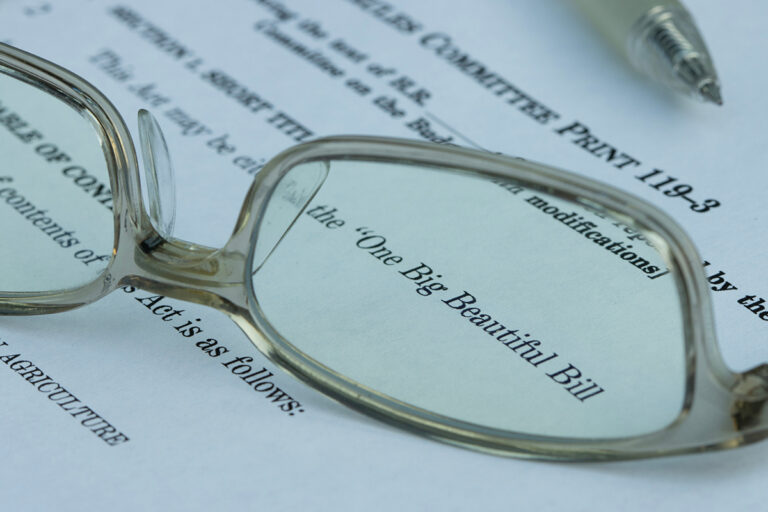March 16th, 2020
What the “Families First Coronavirus Response Act.” Means for You and Your Business
Posted in: Employment Law Tax Law Tagged: Coronavirus, Darla J. McClure, David S. De Jong
Author: Darla J. McClure, David S. De Jong

UPDATED 3/26/2020: President Trump has just signed into law the revised “Families First Coronavirus Response Act.” The Act becomes effective on April 1, 2020, so employers should immediately begin preparations to ensure compliance with the law.
PAID SICK LEAVE
The Act requires all private employers with up to 500 employees, and all public employers, to provide up to 80 hours of paid sick leave in addition to any leave already provided by the employer to any employees who must be absent from work and is unable to telework (work remotely) because:
- The employee is subject to a Federal, State, or local quarantine or isolation order related to COVID-19;
- The employee has been advised by a health care provider to self-quarantine due to concerns related to COVID-19;
- The employee is experiencing symptoms of COVID-19 and seeking a medical diagnosis;
- The employee is caring for an individual who is subject to an order as described in subparagraph (1) or has been advised as described in paragraph (2);
- The employee is caring for a son or daughter of such employee if the school or place of care of the son or daughter has been closed, or the child care provider of such son or daughter is unavailable, due to COVID-19 precautions; or
- The employee is experiencing any other substantially similar condition specified by the Secretary of Health and Human Services in consultation with the Secretary of the Treasury and the Secretary of Labor.
All employees are eligible for paid sick leave immediately upon hire, and employers may not require employees to use other paid leave before using this emergency paid leave.
Employers are prohibited from requiring employees to find a replacement employee to cover their shift during a time when the employee is using emergency paid sick leave. Sick leave need not be paid out on termination of employment and cannot be used intermittently. Employers will be required to post a Notice, advising employees of their rights under the Act, which the Department of Labor is to have prepared within 7 days of the enactment of the Act. The requirements of the Act will expire on December 31, 2020.
The maximum wages to be counted in the case of an employee who must obtain a diagnosis or self-isolate would be capped at $511 per day; the maximum wages to be counted in the case of an employee who must care for a family member including one whose school or place of care would be closed would be capped at $200 per day.
Paid sick leave pursuant to this Act used to care to care for an individual subject to quarantine (pursuant to Federal, State, or local government order or advice of a health care provider), or to care for a child (under 18 years of age) whose school or child care provider is closed or unavailable for reasons related to COVID-19, and/or the employee is experiencing a substantially similar condition as specified by the Secretary of Health and Human Services is paid at 2/3rds the employee’s regular rate of pay.
FAMILY AND MEDICAL LEAVE
The Act requires all private employers with up to 500 employees to provide paid leave to those employees who are unable to work (or telework) due to a need for leave to care for the son or daughter under 18 years of age of such employee if the school or place of care has been closed, or the child care provider of such son or daughter is unavailable, due to a public health emergency related to COVID-19.
To be eligible for this FMLA, employees need only to have been employed for 30 days. The first 10 days of this FMLA may be unpaid, though the employee may elect to substitute paid time off, or emergency paid sick time offered under the Act. An employer may not however require an employee to substitute paid time off for any of this expanded FMLA time off. After the first 10 days of leave, the remaining 10 weeks of leave must be paid at a rate of at least 2/3 of the employee’s usual rate of pay for the number of hours he or she would usually be scheduled to work, capped at $200/day or $10,000 total per employee.
Employers with 25 or fewer employees may not have to reinstate an employee who takes leave pursuant to this section if the position held by the employee no longer exists due to economic conditions or other changes that were caused by COVID-19. In that case, the employer must make reasonable efforts to restore the employee to an equivalent position with equal pay and benefits, and if not possible, must contact the employee over the following year if an equivalent position becomes available.
These requirements will also expire at the end of 2020. Importantly, the new law does not require that employers provide paid leave for employees who are off work just because of an office closure.
EXCEPTIONS
The Act contains language providing authority to the Secretary of Labor to exempt employers with fewer than 50 employees from paid sick leave and expanded FMLA requirements, if complying would jeopardize the business as a going concern, and to exclude certain healthcare providers and emergency responders from receiving such benefits.
TAX CREDIT
The Act also provides employers with a refundable tax credit equal to 100 percent of the sick leave as well as the family and medical leave required by law to be paid. The credit is applied against matching social security. A similar credit for self-employed individuals is applied against income and self-employment tax.
More on issues affecting businesses and individuals in our COVID-19 Resource Center.






